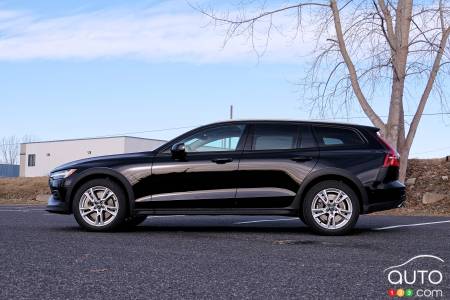Here in Canada, Volvo sells sedans, SUVs and yes, wagons. And you can tell them apart without even looking at them: the sedans get an S in the name (S60 and S90), the SUVs an XC (XC40, XC60 and XC90), and the wagons a V (V60 and V90). Nothing like putting an order to things. Anyhow, I recently drove a V60 Cross Country (CC) so I could come up with 10 things you really wanted to know about it – even if you didn’t know that.
Auto123 launches Shopicar! All new makes and models and all current promotions.
# 1 It’s an idea out of fashion
But first off, why choose a wagon to poke and prod? Well I can give you five great reasons:
One. It can house more stuff and doodads than a sedan. But then, you might ask, if it’s a cavernous trunk you want, why not just go for an SUV? Which brings me to…
Two. I would choose a wagon if only to distinguish myself from the hordes of utility models grazing on our roads and highways, contrarian that I am.
Three. There are folks who need to lug kids around but swear on their grandmother’s grave they’ll never, ever be caught at the wheel of a minivan.
Four. Many wagons have an access threshold that, like Baby Bear’s porridge, is just right - not too high and not too low. So you don’t have to contort yourself into the seat to avoid smacking your head on the top of the door opening, nor do you need a ladder or mountain-climbing gear to help you clamber up into the cabin. Granted, many smaller SUVs hit the same sweet spot, but then there’s…
Five. Driving a wagon is in most every instance a much more lively experience than piloting an SUV – and don’t even bring up what a minivan does to the soul of the average driver!
# 2 Its sights are set on the Germans
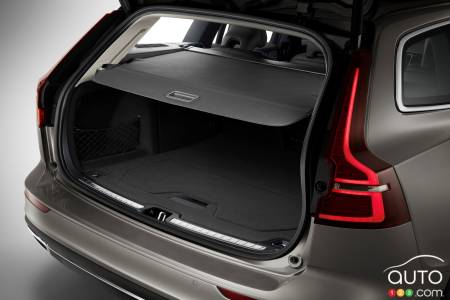
When it comes to identifying the V60’s direct competitors, it’s important to stick to comparing apples and apples. And given that the price range of the Swedish wagon starts where that of the Subaru Outback ends, that eliminates the Japanese entry – though I’ll come back to that in a bit.
Anyways, with a sticker price ranging (widely) between $44,000 and $82,000, the V60 trains its beady eyes pretty much exclusively at the Germans, notably the Mercedes-Benz C-Class ($47,700) and E-Class ($76,400) and the BMW 3 Series Touring ($48,900), not to mention the Audi A4 allroad quattro ($50,200), A6 allroad ($75,200) and the highly anticipated RS6 Avant (expected to run about $120,000).
#3 It doesn’t get much love in the US of A
I would have been happy to be able to include the splendid Jaguar XF Sportbrake in that list, except that its maker has chosen to consider the North American market to be the USA, and the USA only.
That’s odd given how little enthusiasm American consumers have for wagons these days. In 2018, in fact, shoppers there bought only 212,000 wagons in all, which sounds alright but is not as it represents but 2% of that enormous market. The last real blue-blood American wagons left this world in 1996; they were the Buick Roadmaster and the Chevrolet Caprice Classic.
Mind you there is the Buick Regal TourX offered south of the border… but it’s made in Germany.
#4 It's loose in the land of the Teutons…
The land of exceptional beer, sausages and sauerkraut is, you may or may not know, where you’ll find the greatest number of wagons on roads. German consumers lap up between 600,000 and 700,000 of them ever year, which represents about a fifth of vehicles sales overall. And there’s your answer to the question of why so many of the world’s wagons are Teutons.
#5 It’s on stilts
My test drive of the Volvo V60 was in fact a test drive of the model’s Cross Country version, or the CC to its friends and close relatives. What makes this variant distinct? Three elements, actually. Its ground clearance is 210 mm instead of the regular V60’S 142 mm; it’s embellished with decorative elements that are to varying degrees supposed to “protect” it; and it features the requisite all-wheel-drive system, enriched by the presence of Hill Descent Control (by which the car can negotiate a sharp descent without your intervention, save for holding the steering wheel).
Other than that, the chassis isn’t really more rugged, and neither is the engine. Volvo’s strategy is predicated on making milder off-road escapades somewhat easier, but especially, making it look like it will be easier. The CC tells others you’re a genuine all-terrain tamer, like you could gallivant off to the Amazon or the forests of Borneo if you felt like it. Just as soon as you do your run to the local Walmart…
#6 It’s the latest in a short line
So which automaker first dreamed up the idea of marketing a wagon as an all-terrain adventurer? Audi came out with its allroad version in 1999, and Volkswagen only followed in 2015 with an Alltrack version of its Golf Sportwagen (absent from our Canadian showrooms since 2019).
But at Volvo, the wagon is like a religion. The 850 the company rolled out in 1993 was a replacement for the 240 Series (est. 1974), itself the successor to the 140 Series (born 1966). In 1996 the V70 took the place of the 850, and one year later was born the V70 XC. That model is the ancestor of the V60 Cross Country, available at fine Volvo establishments since 2010.
And yet, the idea of an off-road-capable wagon really first germinated at Subaru. Some may remember those likeable TV ads back in 1995 that starred Crocodile Dundee himself, Australian actor Paul Hogan, as he vaunted the merits of the then-new Outback model.
#7 It’s a contradiction in terms
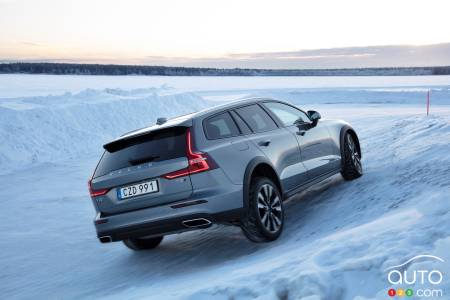
Volvo, for most of us, equates with safety – and with reason, since the company is behind any number of safety innovations, not least of which the seatbelt back in 1959. Given that, I’m at a bit of a loss to explain why a company that’s always promoted safety first, second and third makes buyers pay extra to benefit from things like a blind spot monitor or rear transversal traffic alert.
Just to turn the knife in the wound a little more, Volvo has just recalled ALL of its 2019 and 2020 models (amounting to nearly 12,000 vehicles in Canada, and 10 times that in the U.S.). The problem? The automatic emergency braking system could malfunction, and will require a software update at dealerships.
#8 It might be Chinese-owned, but it’s still mighty Swedish
The 2020 V60 CC represents the second generation of the model first presented at the 2018 Geneva Motor Show. It’s distinguishable by the rear lights, very similar to those found on the XC60 SUV, and by the “Thor’s Hammer” LED headlights in the vague shape of the favourite toy of that Viking god, the one in charge of thunder and lightning and tasked with protecting humanity via the use of said toy, to which nothing can resist (except maybe Captain America’s shield? See point #3 above).
#9 It’s simpler here than there
In Europe, the lucky buyer of the V60 has the choice of seven different engines, including tow diesel units and three hybrid configurations. Life is simpler for us Canadians: all Volvos make use of the same 2.0L turbocharged 4.cylinder, the one that comes with the T5 designation. Add a volumetric compressor to that and you get the T6. Take the turbo unit with volumetric compressor and add to it two electric motors and you end up with the T8 plug-in hybrid powertrain.
You can climb the ladder one step higher by entrusting the T8 to the folks at Polestar (acquired by Volvo in 2015). Then you will earn yourself a few more horses and more-dynamic on-road behaviour.
Now forget everything I just told you, because if you’re opting for the CC you don’t have any of those options: it’s available strictly in a T5 configuration, priced starting at $48,900.
#10 Its multimedia system requires some savvy decrypting
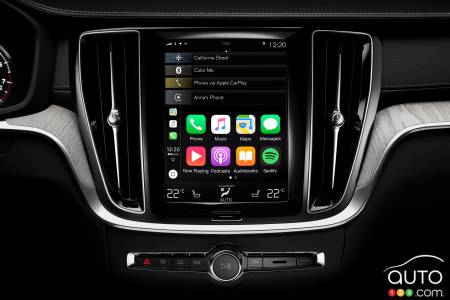
I could imagine the V60 CC being the favourite mode of transportation of Indiana Jones, because well even adventure-seeking archeologists like their little comforts. This car offers typically Scandinavian levels of plushness, luxury and purified lines.
It’s just a shame that purified esthetic doesn’t apply to the Sensus system on the central screen. It’s not easy to decode, though of course decrypting complex hieroglyphics is exactly bookish Prof. Jones’ specialty, so there you go…
#11 (bonus) Apprécions
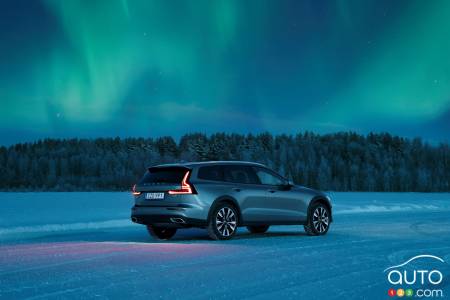
Now that you know a little more about the historical and commercial context of this Volvo wagon, and about the CC’s origins, here’s a little epilogue for you that sums up the experience of actually driving the thing.
Its luggage hold can take in 529 litres, or up to 1,441 litres with the seats down (compared to 1,432 litres in the XC60). The 250 hp under the hood is sufficient for what you’ll use the car for, and enough to pull up to 3,500 lb.
Did I take it on a rock ‘n rolling ramble across the Canadian Shield during my time with it? Not once. But I could have. As Volvo Canada proclaims proudly on its website, this sport wagon was “created to take you to the heart of the adventure”. Indeed.


